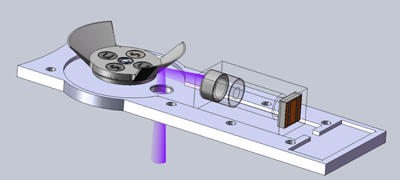New device for the detection of bacteria is as good as ‘GALD’
A scientist at Macquarie University is working with a Sydney hospital to develop a device, known as the Gated Auto-synchronous Luminescence Detector (GALD), which could radically improve the means of detection for infection-causing bacteria.

Physicist Dr Russell Connally has spent the past three years fine-tuning the portable device, which can be fitted to a standard fluorescence microscope to observe delayed luminescence for the rapid identification of microorganisms such as Staphylococcus aureus (Golden Staph), tuberculosis, Cryptosporidium and Giardia in samples of water, blood and other body fluids.
The GALD was developed independently within the University by Dr Connally as a means of overcoming the limitations of existing imaging systems. Delayed luminescence detection relies upon special compounds that glow persistently after a short exposure to strong light. The bacteria or parasites are coated with these compounds and then viewed through the GALD which suppresses all light except that emitted by the coated bacteria. The effect is similar to searching for one person in a huge crowd at night, but that person has a light on their head.
The highly selective nature of detection achieved by the GALD device means it can be used to detect microorganisms when they are very few in number. This is critical since the time-consuming process of culturing organisms can be skipped and samples can be analysed within hours instead of days. Currently the GALD is undergoing trials at Macquarie University for the automated detection of drug resistant Golden Staph (methicillin resistant Staphylococcus aureus) using nasal swab samples.
“Examining a sample under a microscope can be a tedious process and the longer it takes, the more likely it is that the eye will get tired and that human error may occur,” Connally said. “The GALD greatly reduces the complexity of image information relayed to the operator; if the disease organism is not present, the image is black and scanning can proceed rapidly.
“In its simplest form it provides 100 per cent coverage of the slide and delivers the coordinates of putative target for the operator to review.”
Connally will spend this year commercialising the GALD device.
Any enquiries from the media should be directed to:
Samantha Norris
Phone: (02) 9850 9658
Email address: samantha.norris@mq.edu.au
Publish Date: 27 Apr 2010
